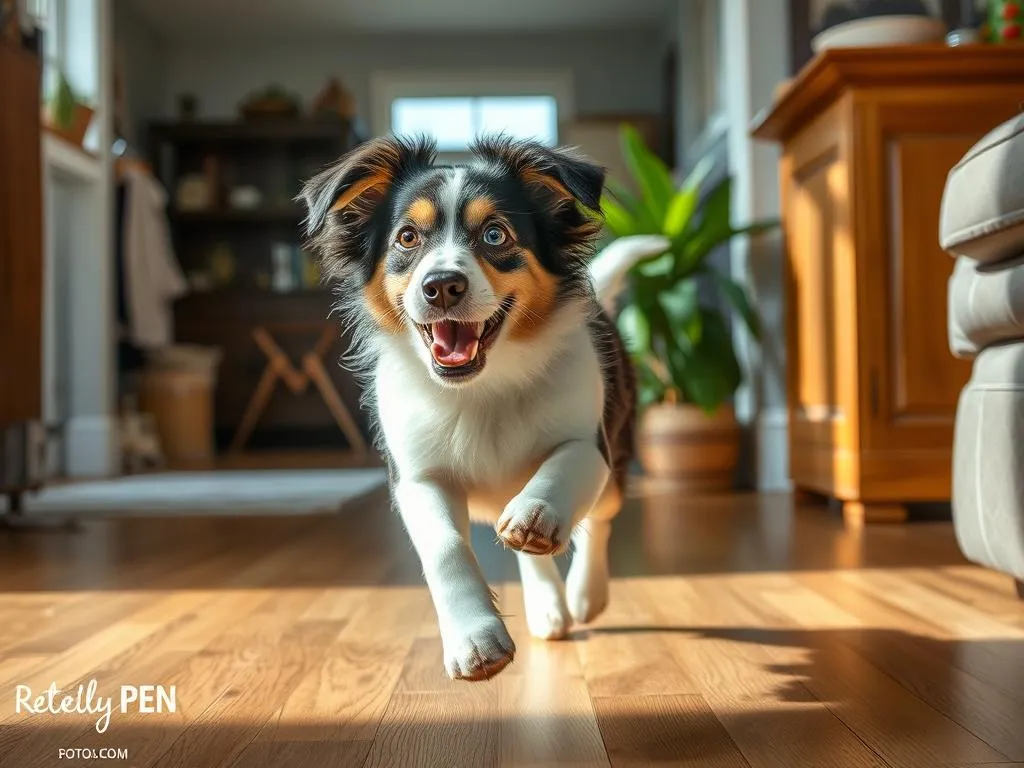
Introduction
Dogs are known for their unique behaviors and quirks, ranging from tail wagging to head tilting. One particularly common yet puzzling behavior seen in many dogs is racing through the house. This energetic sprinting can leave pet owners wondering about the reasons behind it. Understanding why your dog engages in this behavior is essential for providing better care and ensuring their happiness.
In this blog post, we will explore the various reasons behind the racing behavior in dogs, including excitement, anxiety, playfulness, and the need for exercise. By delving into these key themes, we can better understand our canine companions and create a more harmonious living environment for both dogs and their owners.
Understanding Dog Behavior
The Basics of Canine Behavior
Dogs communicate through a combination of vocalizations, body language, and behaviors. Understanding these communication methods is crucial for interpreting what your dog is trying to convey. Several factors influence dog behavior, including breed, age, and environment. For instance, some breeds are naturally more energetic and playful, while others may be more laid-back.
Common behavioral patterns in dogs include barking, chewing, digging, and, of course, racing through the house. Each behavior serves a purpose and can provide insights into your dog’s emotional state or needs.
Why Dogs Race Through the House
Racing through the house can be defined as a sudden burst of energy where a dog runs around at high speed, often with a playful demeanor. This behavior can occur in various scenarios, such as during playtime, when greeting their owners, or even during moments of excitement.
It’s essential to differentiate between normal racing behavior and concerning racing behavior. Normal racing is typically playful and energetic, while concerning racing may indicate anxiety or stress. Understanding the context of the behavior is crucial for effective pet care.
Reasons for Racing Behavior
Excitement and Playfulness
One of the primary reasons dogs race through the house is excitement. When dogs are happy or stimulated, they may express their joy through bursts of energy, often leading to rapid running and playful antics. Common situations that lead to this behavior include:
- Playtime: Engaging in games like fetch or tug-of-war can trigger racing behavior as dogs become excited about the interaction.
- Greeting Owners: After a long day apart, many dogs express their joy through enthusiastic racing when their owners return home.
- Toys and Interaction: The presence of favorite toys or engaging play can also lead to racing as dogs seek to express their excitement.
Understanding this aspect of dog behavior is essential, as it highlights the joy and playfulness that dogs bring into our lives.
Excess Energy and Need for Exercise
Another significant factor contributing to dogs racing through the house is excess energy. Dogs require a certain amount of physical and mental stimulation to stay healthy and happy. Inadequate exercise can lead to pent-up energy, resulting in racing behavior as dogs seek an outlet for their restlessness.
Physical activities such as daily walks, runs, or play sessions are crucial for expending energy. Mental stimulation is equally important; activities like puzzle toys and training exercises can help tire out a dog mentally, reducing the likelihood of racing behavior.
Anxiety and Stress
While racing can often be a playful expression of excitement, it can also stem from anxiety and stress. Dogs may race in response to environmental triggers or changes in their routine. Common anxiety triggers include:
- Loud Noises: Thunderstorms, fireworks, or sudden loud sounds can cause dogs to feel anxious, leading to frantic running.
- Separation Anxiety: Dogs that experience separation anxiety may exhibit racing behavior when left alone or when their owners prepare to leave.
It’s important to recognize signs of stress alongside racing behavior, such as excessive barking, panting, or destructive tendencies, to address the underlying cause effectively.
Instinctual Behaviors
Dogs are driven by instinctual behaviors that can also lead to racing. These instincts may include chasing, herding, or exploring. Certain breeds are more prone to these behaviors due to their historical roles. For example:
- Herding Breeds: Breeds like Border Collies may exhibit racing due to their instinct to herd and chase.
- Hound Breeds: Hounds may race when they pick up a scent, following their instinct to chase.
Understanding your dog’s breed characteristics can provide insight into their behavior and help tailor your approach to managing their racing.
How to Address Racing Behavior
Providing Adequate Exercise
To mitigate racing behavior, it’s essential to provide your dog with adequate exercise. Daily routines should include a combination of physical and mental activities that suit your dog’s age, breed, and energy level. Here are some recommendations:
- Daily Walks: Aim for at least 30 minutes to an hour of walking each day.
- Playtime: Engage in interactive play sessions using toys that encourage chasing and retrieving.
- Agility Training: Consider agility courses or training sessions that stimulate both the mind and body.
By ensuring your dog receives sufficient exercise, you can help reduce the buildup of excess energy that leads to racing behavior.
Mental Stimulation Techniques
In addition to physical exercise, providing mental stimulation is crucial for a well-rounded approach to pet care. Dogs thrive on challenges that keep their minds engaged. Here are some techniques to incorporate mental stimulation into your daily routine:
- Puzzle Toys: Invest in interactive toys that require problem-solving to access treats.
- Training Exercises: Incorporate obedience training or trick training sessions to engage your dog’s mind.
- Scent Games: Hide treats around the house for your dog to find, encouraging natural sniffing behaviors.
By integrating these mental challenges into your dog’s daily life, you can help alleviate racing behavior while providing enrichment.
Creating a Calm Environment
A calm environment can significantly impact your dog’s behavior. Reducing anxiety triggers at home can help create a sense of security for your dog. Consider the following tips:
- Safe Spaces: Designate a safe area in your home where your dog can retreat during stressful situations.
- Calming Music: Playing soft music or white noise can help soothe anxious dogs.
- Routine: Establishing a consistent daily routine can provide stability and reduce anxiety levels.
Creating a predictable environment will help your dog feel more secure and less prone to racing due to anxiety.
When to Seek Professional Help
If you notice that your dog’s racing behavior is excessive or accompanied by signs of distress, it may be time to seek professional help. Here are some signs that indicate a deeper issue:
- Persistent Anxiety: If your dog shows continuous signs of anxiety, such as trembling or hiding.
- Destructive Behavior: If racing is accompanied by destructive tendencies, such as chewing furniture.
- Severe Racing: If racing behavior disrupts daily life or poses a danger to your dog or others.
In such cases, consider consulting professionals such as dog trainers, behaviorists, or veterinarians who specialize in canine behavior. They can provide personalized guidance and strategies to address your dog’s unique needs.
Conclusion
Understanding why your dog races through the house is essential for fostering a positive and harmonious relationship with your furry friend. Whether it stems from excitement, excess energy, anxiety, or instinctual behaviors, being aware of the reasons behind this behavior can help you tailor your care approach.
By providing adequate exercise, mental stimulation, and a calm environment, you can manage racing behavior effectively. Additionally, recognizing when to seek professional help can ensure that your dog receives the support they need.
As you observe your dog’s behavior, remember that each pet is unique. Tailoring your approach to their individual needs will lead to a happier, healthier, and more well-behaved companion.









